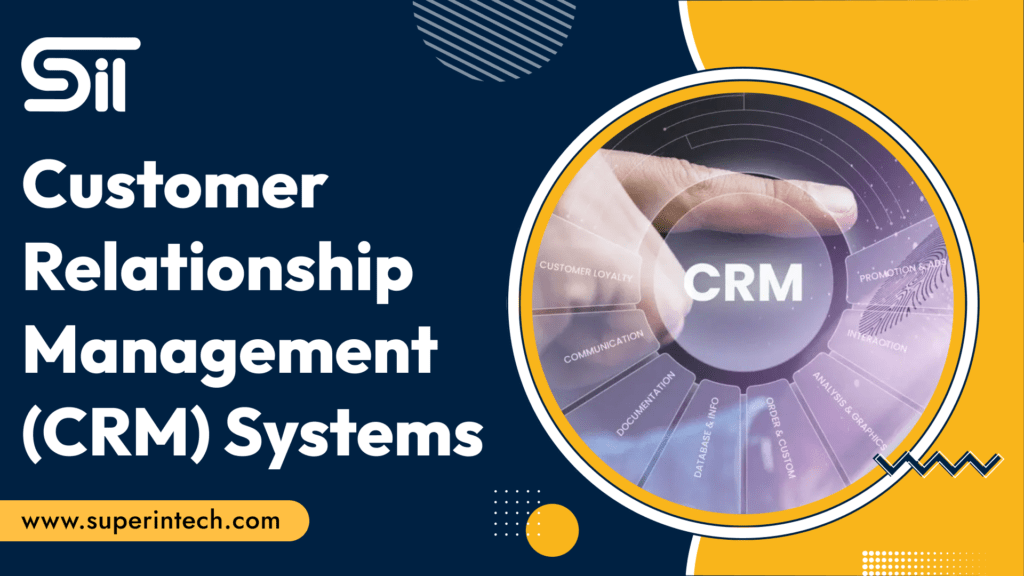Omnichannel Marketing: Creating a Seamless Customer Experience

Introduction: In the digital age, consumers effortlessly transition between online and offline channels, demanding a cohesive brand experience. Omnichannel marketing bridges the gap between various touchpoints, creating a unified customer journey. This blog post explores the concept of omnichannel marketing, its importance in contemporary business strategies, and the key elements that contribute to a seamless customer experience. Defining Omnichannel Marketing: It is a holistic strategy that integrates all available channels to deliver a unified brand experience. Multichannel marketing, which simply ensures a presence across various channels, omnichannel marketing focuses on the interconnectedness of these channels. This approach aims to provide customers with a consistent and personalized experience, no matter the platform or device they use. The Evolution of Customer Expectations: The rise of omnichannel marketing is closely tied to the evolving expectations of modern consumers. Today’s customers expect a fluid transition between online and offline channels, seeking a seamless experience as they move from a website to a mobile app, social media, or a physical store. Meeting these expectations is essential for businesses looking to thrive in a customer-centric landscape. Integrated Customer Data: At the heart of omnichannel marketing is integrated customer data. Siloed data, where information is segregated based on channels, inhibits the ability to create a unified customer experience. Omnichannel marketing relies on a centralized and comprehensive customer database, allowing businesses to track customer interactions, preferences, and behaviours across all touchpoints. Consistent Brand Messaging in Omnichannel Marketing: Maintaining a consistent brand message is essential in omnichannel marketing. Customers engage with your brand on social media, your website, or in-store, the messaging, tone, and visual elements should align seamlessly. This consistency builds brand trust and recognition, fostering reliability and coherence in the minds of your customers. Cross-Channel Personalization in Omnichannel Marketing: It enables businesses to leverage customer data for personalized interactions. By understanding individual preferences and behaviour’s, marketers can tailor messages, offers, and recommendations across channels. Personalization enhances the customer experience, making interactions more relevant and increasing the likelihood of conversion. Seamless Transition between Channels: It ensures smooth transitions between channels. A customer can browse products on a mobile app, add items to their cart, and finalize the purchase on a desktop website. This seamless process reduces friction, enhancing the user experience. Unified Customer Service: It extends to customer service, providing a seamless and integrated support experience. Customers reach out via social media, email, live chat, or in-person, businesses with omnichannel strategies can provide consistent service across all platforms. This unified approach enhances customer satisfaction and loyalty. Analytics and Attribution Modelling: Effective analytics and attribution modeling are critical components of omnichannel marketing. By analyzing customer interactions and attributing conversions across channels, businesses gain insights into the customer journey’s effectiveness. This data-driven approach allows for continuous optimization, ensuring that marketing efforts align with customer preferences and behaviors. Technology Integration: Successful omnichannel marketing relies on the integration of technology solutions that enable seamless communication and data flow across channels. Customer Relationship Management (CRM) systems, marketing automation platforms, and analytics tools play a crucial role in orchestrating omnichannel strategies. Integrating these technologies ensures a unified infrastructure that supports the holistic customer experience. Conclusion: It goes beyond a trend—it’s essential for businesses to succeed in today’s competitive landscape. As customer expectations evolve, businesses must adapt by creating a seamless brand experience. This involves personalized messaging, unified customer data, and integrated technology. Together, these elements ensure a cohesive journey that meets the demands of modern consumers. It is crucial for businesses aiming to excel. As technology and preferences evolve, achieving a unified omnichannel strategy remains an ongoing pursuit, shaping the future of customer engagement and brand loyalty.
Programmatic Advertising: What You Need to Know

Introduction: In digital marketing, programmatic advertising has revolutionized how brands engage with their audiences. This blog post explores programmatic advertising, covering its definition, components, benefits, and challenges. Whether you are an experienced marketer or new to digital advertising, understanding programmatic advertising is essential in today’s constantly changing landscape. Defining Programmatic Advertising: It automates the process of purchasing and selling digital ads in real-time using advanced algorithms and data analysis. This method replaces traditional manual negotiations with a sophisticated auction-based system that determines ad placements in milliseconds. By leveraging data-driven insights, programmatic advertising allows for precise targeting and efficient ad spending, transforming how brands reach and engage with their audiences. Real-Time Bidding (RTB): A cornerstone of programmatic advertising is Real-Time Bidding (RTB), an auction mechanism where advertisers bid on ad inventory in real-time. This process occurs within the milliseconds it takes for a webpage to load, allowing advertisers to target specific audiences and display relevant ads based on user data. RTB enables a more precise and efficient ad delivery system compared to traditional methods. Data-Driven Decision Making: It leverages the power of data to inform decision-making. Advertisers use a variety of data points, including user demographics, behaviour, and contextual information, to target the most relevant audience for their campaigns. This data-driven approach ensures that ads are served to users who are more likely to engage with the content, maximizing the effectiveness of the advertising budget. Automated Ad Buying: The automation aspect of programmatic advertising streamlines the ad buying process. Instead of manual negotiations and human oversight, algorithms and artificial intelligence (AI) handle the buying and placement of ads. This increases efficiency and allows for more precise targeting, ensuring that ads reach the right audience at the right time. Targeting Capabilities: It provides advertisers with advanced targeting capabilities. Beyond traditional demographic targeting, advertisers can utilize behavioural targeting, geotargeting, retargeting, and contextual targeting based on the webpage’s content. This granular targeting ensures ads are highly relevant to the user. Cross-Channel Campaigns: One of the notable advantages of programmatic advertising is its ability to seamlessly execute cross-channel campaigns. It’s display ads, video ads, social media ads, or mobile ads, programmatic technology enables advertisers to coordinate and optimize campaigns across multiple channels. This holistic approach ensures a cohesive brand message across various digital touchpoints. Dynamic Creative Optimization (DCO): Programmatic advertising allows for Dynamic Creative Optimization (DCO), a feature that tailors ad creatives in real-time based on user behaviour and preferences. DCO ensures that users see personalized and relevant content, increasing the likelihood of engagement. This dynamic approach to creative optimization contributes to higher ad performance and conversion rates. Challenges and Concerns: Ad fraud, viewability issues, and brand safety concerns are significant challenges advertisers face. Implementing robust strategies and using trusted platforms is crucial to mitigate these issues and ensure effective campaigns. Conclusion: Programmatic advertising has revolutionized digital advertising with its efficiency, precision, and scalability. Understanding programmatic advertising is vital for marketers to stay competitive. By embracing automation, data-driven insights, and advanced targeting, they can create more impactful and efficient campaigns. Staying informed and adapting to the latest trends and technologies will be crucial for maximizing this dynamic advertising approach.
The Rise of Sustainable and Ethical Marketing Practices

Introduction In an era marked by heightened environmental and social consciousness, consumers are increasingly seeking products and brands that align with their values. This shift in behavior has led to the rise of ethical marketing practices. Businesses are now focusing on profits and making a positive impact on the planet and society. This blog post explores the trend of sustainable and ethical marketing practices, examining its importance, strategies, and impact on businesses and the world. The Changing Landscape of Consumer Expectations As consumers become more aware of the environmental and social implications of their purchasing decisions, their expectations from businesses evolve. Modern consumers are no longer solely driven by product features and prices. They demand transparency, responsibility, and sustainability. This shift has compelled businesses to rethink their marketing strategies and embrace sustainable and ethical marketing practices to stay relevant and appealing. Defining Sustainable and Ethical Marketing Sustainable marketing promotes products and services that have minimal environmental impact throughout their lifecycle, from production to disposal. Ethical marketing focuses on promoting products and services that are produced and marketed in a socially responsible manner, respecting human rights and fair labor practices. The convergence of these two principles forms the foundation of sustainable and ethical marketing practices. Transparency Builds Trust One pillar of ethical marketing is transparency. Consumers today value openness and honesty from businesses. They want to know the story behind the products they buy, the sourcing of materials, and the ethical considerations involved in the production process. Brands that are transparent in their operations and communicate their commitment to sustainability and ethics build trust with their audience, fostering a stronger connection. Purpose-Driven Marketing The rise of sustainable and ethical marketing is closely tied to the emergence of purpose-driven marketing. Businesses increasingly recognize the need to go beyond profit-making and contribute to the well-being of the planet and society. Brands that embrace a clear and authentic purpose, aligned with sustainable and ethical values, resonate more deeply with consumers who seek to support companies that share their concerns and values. Eco-Friendly Packaging and Production A significant aspect of sustainable marketing involves reconsidering packaging and production processes. Brands are transitioning towards eco-friendly packaging materials, reducing waste, and adopting sustainable production methods. Communicating these changes through marketing initiatives appeals to environmentally conscious consumers and showcases a commitment to responsible business practices. Corporate Social Responsibility (CSR) In ethical marketing, Corporate Social Responsibility (CSR) plays a pivotal role. Businesses are expected to go beyond profit generation and actively contribute to social causes. Supporting local communities, championing diversity and inclusion, or investing in education and healthcare initiatives, integrating CSR into marketing strategies helps create a positive brand image and fosters goodwill. Influencer Partnerships for Good In the age of social media, influencers have become powerful voices that shape consumer perceptions. Sustainable and ethical marketing extends to influencer partnerships, where brands collaborate with influencers who share their values. These partnerships amplify the message of sustainability and ethics to a broader audience, leveraging the influencer’s reach and authenticity to make a positive impact. Conclusion The rise of sustainable and ethical marketing practices marks a transformative shift in the business landscape. As consumers become more discerning, businesses that prioritize sustainability and ethics meet market expectations and contribute to a more responsible and compassionate world. The journey towards sustainability is not merely a marketing trend; it represents a fundamental reimagining of the role businesses play in shaping a better future. The importance of sustainable and ethical marketing practices goes beyond profit margins. It speaks to the collective responsibility businesses have in creating a positive impact on the environment and society. As this trend gains momentum, businesses that embrace sustainability and ethics in their marketing strategies will secure a competitive edge and play a crucial role in building a more sustainable and ethical global marketplace.
Data-Driven Marketing: Understanding Analytics and Insights

In the digital age, data has become a goldmine for businesses to understand customers, optimize strategies, and drive growth. Data-driven marketing, powered by analytics and insights, is now the cornerstone of successful modern marketing strategies. This blog post explores the significance of data-driven marketing, delves into analytics, and unveils how businesses can leverage actionable insights to stay ahead in a competitive landscape. The Power of Data in Marketing: The volume of data from online and offline interactions presents a huge opportunity for marketers. Data from website visits, social media engagement, purchase history, and customer feedback provides valuable insights into consumer behaviour, preferences, and trends. By harnessing this data, marketers can make informed decisions, personalize campaigns, and create more relevant and impactful experiences for their target audience. Analytics: Unveiling Patterns and Trends: At the heart of data-driven marketing lies analytics – analysing and interpreting data to uncover patterns, trends, and correlations. Marketing analytics empowers businesses to measure campaign performance, understand customer journeys, and optimize strategies for maximum impact. Tools like Google Analytics help businesses track website traffic, user behaviour, and conversion rates, offering a comprehensive understanding of their online presence. Customer Segmentation and Targeting: One key advantage of data-driven marketing is the ability to segment customers based on characteristics, behaviour, and preferences. Customer segmentation allows businesses to create targeted and personalized marketing campaigns, ensuring messages resonate with specific audience segments. By tailoring content and offers to different customer segments, businesses can enhance engagement and conversion rates. Personalization: Tailoring Experiences for Individuals: Data-driven marketing goes beyond generic mass communications; it enables personalized experiences for individual customers. By analysing data of past purchases, browsing history, and demographic information, businesses can deliver highly relevant content and recommendations. Personalization enhances customer satisfaction, increases conversion likelihood, and fosters long-term customer loyalty. Predictive Analytics: Anticipating Future Behaviour: As technology advances, predictive analytics has become a powerful tool in the marketer’s arsenal. By leveraging machine learning algorithms, businesses can analyse historical data to predict future customer behaviour. Predictive analytics enables marketers to identify potential leads, forecast sales trends, and optimize marketing efforts for maximum impact. Social Media Analytics: Navigating the Digital Landscape: In the era of social media dominance, businesses must navigate the digital landscape strategically. Social media analytics tools provide insights into audience engagement, sentiment analysis, and campaign performance. Understanding which platforms resonate most with the target audience allows marketers to allocate resources effectively and tailor content to each platform’s unique dynamics. Real-Time Analytics: Agility in Action: In today’s fast-paced digital environment, real-time analytics has become essential for agile marketing strategies. Real-time data allows businesses to monitor campaign performance, respond promptly to changing trends, and adjust strategies on the fly. This agility is crucial for seizing time-sensitive opportunities and swiftly mitigating potential challenges. Conclusion: Data-driven marketing, fuelled by analytics and actionable insights, has transformed how businesses connect with their audience. From understanding customer behaviour to optimizing marketing strategies in real-time, data-driven approaches empower marketers to make informed decisions and drive tangible results. As technology continues to evolve, the role of data in marketing will only become more central. The journey of data-driven marketing is ongoing. Businesses that prioritize the collection, analysis, and interpretation of data will adapt to changing market dynamics, meet customer expectations, and stay ahead of the competition. As we navigate the digital landscape, the value of data-driven insights will grow, shaping the future of marketing strategies worldwide.
Customer Relationship Management (CRM) Systems

Introduction: In the fast-paced world of business, adapting to changing customer expectations is crucial for success. The evolution of Customer Relationship Management (CRM) systems stands as a testament to the dynamic nature of the business landscape. Over the years, CRM systems have evolved from basic contact management tools to sophisticated platforms that empower businesses to build meaningful, long-lasting relationships with their customers. Genesis of CRM: It started in the 1980s. Early CRM systems primarily focused on contact management, helping businesses organize and store customer details more efficiently. These early systems were quite limited and didn’t have the robust features that modern CRM solutions offer today. The evolution of CRM has been marked by significant advancements in technology and functionality over the years. Rise of Database Marketing: As businesses recognized the potential of leveraging customer data for targeted marketing, the 1990s saw the emergence of database marketing. This era marked a shift from passive contact management to actively using customer information for personalized marketing campaigns. CRM systems became more sophisticated, incorporating features like customer segmentation and campaign management. Integration of Sales and Customer Service: In the late 1990s and early 2000s, CRM systems underwent a significant transformation with the integration of sales and customer service functionalities. Businesses realized the importance of aligning sales and customer service efforts to provide a seamless customer experience. This integration allowed for a holistic view of customer interactions, enabling organizations to streamline their processes and enhance customer satisfaction. Cloud-Based CRM Solutions: The mid-2000s witnessed a paradigm shift with the advent of cloud computing. Cloud-based CRM solutions emerged, offering businesses the flexibility to access their CRM systems from anywhere with an internet connection. It reduced the need for on-premise infrastructure and made CRM systems more scalable and cost-effective for businesses of all sizes. Social CRM: As social media gained prominence in the late 2000s, CRM systems evolved to incorporate social CRM functionalities. Businesses recognized the need to engage with customers on social platforms and track their social interactions. Social CRM allowed organizations to monitor customer sentiment, gather valuable insights, and respond to customer inquiries in real-time. Mobile CRM: The proliferation of smartphones in the 2010s paved the way for mobile CRM solutions. With employees working on the go, mobile CRM empowered sales and service teams to access crucial customer information. They could update records and collaborate with colleagues from their mobile devices. This mobility improved productivity and contributed to better customer interactions. Artificial Intelligence (AI) and Machine Learning (ML): The latest chapter in the evolution of CRM systems involves the integration of artificial intelligence and machine learning. These technologies enable businesses to analyse vast amounts of customer data to derive actionable insights. AI-driven CRM systems can automate routine tasks, predict customer behaviour, and personalize interactions. Conclusion: The evolution of Customer Relationship Management (CRM) systems reflects the ever-changing dynamics of customer expectations and technological advancements. From humble beginnings as contact management tools to the sophisticated AI-driven platforms of today, CRM systems have become indispensable for businesses aiming to build and maintain strong customer relationships. Looking ahead, the future of CRM will be shaped by emerging technologies like augmented reality, virtual reality, and blockchain. As businesses prioritize customer-centric strategies, CRM systems will help them stay agile, responsive, and competitive. The journey of CRM is far from over. As technology advances, the capabilities of these essential business tools will continue to grow.
Leveraging LinkedIn for B2B Marketing Success

Introduction: In the ever-evolving landscape of B2B marketing, businesses are continually seeking effective strategies to connect with their target audience and foster meaningful relationships. In this digital age, social media platforms play a pivotal role in shaping marketing strategies, and one platform stands out for B2B professionals – LinkedIn. Leveraging the power of LinkedIn can be a game-changer for businesses looking to enhance their B2B marketing efforts. In this blog post, we’ll explore the various ways in which businesses can harness the potential of LinkedIn to achieve marketing success. Understanding LinkedIn’s Unique Position: LinkedIn uniquely positions itself as the premier platform solely dedicated to professional networking and B2B interactions, providing specialized features for industry-specific discussions and targeted advertising to engage decision-makers effectively. Its focus on career development and thought leadership opportunities makes it an indispensable tool for businesses aiming to establish credibility and expand their professional networks. Creating an Impactful Company Profile: The first step in leveraging LinkedIn for B2B marketing success is to establish a compelling company profile. This serves as the digital face of your business, offering a snapshot of your brand, values, and offerings. Ensure that your profile is complete, including a professional logo, a concise yet informative company description, and contact details. Building a Strong Professional Network: LinkedIn is built on the foundation of networking, and for B2B marketers, building a robust professional network is crucial. Connect with industry peers, clients, partners, and influencers to expand your reach and enhance your credibility. Engage with your network by sharing relevant content, participating in discussions, and endorsing the skills of your connections. A well-nurtured network can become a source of valuable insights, referrals, and collaboration opportunities. Content Marketing on LinkedIn: One of the most potent tools in B2B marketing on LinkedIn is content marketing. The platform provides various content-sharing options, including status updates, articles, and multimedia posts. Create and share content that addresses the pain points of your target audience, showcases your industry expertise, and provides valuable solutions. Utilize LinkedIn’s publishing platform to share long-form articles, thought leadership pieces, and case studies, establishing your brand as a knowledgeable authority in your niche. Sponsored Content and Advertising: Sponsored content and advertising on LinkedIn offer powerful tools for B2B marketers to target and engage with their ideal audience effectively. By utilizing LinkedIn’s robust targeting options based on industry, job title, company size, and more, businesses can ensure their ads reach decision-makers and influencers directly within their professional context. LinkedIn Groups and Communities: LinkedIn Groups provide a unique space for professionals with similar interests to come together, share insights, and engage in discussions. Join relevant groups within your industry and actively participate in discussions. Share your expertise, answer questions, and establish your brand as a valuable contributor. Utilizing LinkedIn Analytics: To refine your B2B marketing strategy on LinkedIn, it’s essential to analyse the performance of your content and campaigns. LinkedIn Analytics provides valuable insights into the demographics, engagement, and effectiveness of your posts and ads. Expanding Your B2B Marketing Horizons on LinkedIn: Expanding your B2B marketing horizons on LinkedIn involves leveraging diverse content formats like articles and videos, and actively engaging in industry discussions to build thought leadership and foster meaningful connections. LinkedIn Showcase Pages: Showcase Pages are extensions of your company page, designed to highlight specific products, services, or initiatives. They allow you to tailor content to a particular audience, providing a more personalized experience. Create Showcase Pages for key offerings and use them to share targeted content that resonates with a specific segment of your audience. Employee Advocacy Programs: Employee advocacy programs empower team members to share company content authentically on platforms like LinkedIn, enhancing organic reach and credibility. By leveraging employees as brand ambassadors, businesses can cultivate trust and amplify their message effectively to prospective clients and industry peers. LinkedIn Live and Video Content: LinkedIn Live and video content are crucial components of successful B2B marketing strategies on LinkedIn. Leveraging LinkedIn Live enables businesses to interact with their audience in real-time, cultivating genuine connections and showcasing industry expertise effectively. Strategic Partnerships and Collaborations: Identify potential partners or complementary businesses within your industry and explore collaboration opportunities. Hosting joint webinars, co-authoring articles, or organizing shared events can expand your reach and introduce your brand to new audiences. Strategic partnerships enhance credibility and contribute to a more robust B2B marketing ecosystem. Personal Branding for Executives: Encourage key executives within your organization to establish and cultivate their personal brands on LinkedIn. Executives can share their insights, participate in industry discussions, and connect with other thought leaders. A strong personal brand adds credibility to your company and creates additional touchpoints for potential clients. Utilizing LinkedIn Polls: Utilize LinkedIn’s interactive features like polls to gather valuable feedback and engage your audience actively. Consistent Monitoring and Adaptation: The digital landscape is ever-changing, and LinkedIn is no different. Conclusion: LinkedIn B2B marketing strategies success is an ongoing journey that requires a combination of strategy, creativity, and adaptability. As you implement these strategies and explore additional avenues on the platform, keep in mind that building meaningful relationships and providing value to your audience are at the core of any successful B2B marketing endeavour. By optimizing your company profile, executing targeted content marketing strategies, utilizing advertising opportunities, actively participating in LinkedIn groups, and leveraging advanced tactics like Showcase Pages and employee advocacy programs, you can establish a robust presence on LinkedIn. This strategic approach positions your brand for sustained success in the competitive B2B landscape. In today’s digital landscape, LinkedIn is crucial for B2B marketing success. It enables companies to build valuable connections and drive impactful marketing campaigns. Embrace the opportunities it offers, stay innovative, and adapt to the changing landscape, and you’ll find your business thriving in the interconnected world of B2B marketing on LinkedIn.
The Significance of Video Marketing in Today’s Digital Era

Introduction: In the ever-evolving landscape of digital marketing, video marketing in today’s digital era has emerged as a powerful tool for businesses to connect with their audience. The rise of social media platforms and advancements in technology have made video marketing an indispensable part of any successful marketing strategy. In this blog post, we’ll delve into the significance of video marketing in today’s digital era. The Power of Visual Storytelling: Humans are visual beings, and nothing captures attention quite like moving images. Video marketing allows businesses to tell compelling stories that resonate with their target audience. Increased Engagement on Social Media: Social media platforms have become the primary channels for digital marketing, and video content thrives in this environment. Did you know? HubSpot reports that social media posts containing video content receive 48% more views. Videos generate more likes, shares, and comments, fostering higher levels of engagement. Search Engine Optimization (SEO) Benefits: Video content offers significant SEO benefits by increasing dwell time, reducing bounce rates, and improving organic search rankings. These factors contribute to enhanced visibility and higher search engine rankings for businesses. Building Trust and Authenticity: In the digital era, building trust with consumers is paramount. Video marketing allows businesses to humanize their brand by showcasing the people behind the products or services. Through interviews, behind-the-scenes footage, or customer testimonials, videos create a personal connection that fosters trust and authenticity. According to a study by Animoto, 58% of consumers trust brands with authentic video content. Measurable ROI and Analytics: In today’s digital landscape, businesses leverage advanced analytics on digital platforms to measure the impact of video content effectively, surpassing traditional marketing capabilities. These tools track metrics like views, engagement rates, click-throughs, and conversions, offering vital insights to refine strategies and optimize returns on investment. The Rise of Live Video: Live video has transformed digital interaction, allowing real-time engagement and instant audience feedback. It’s a game-changer for boosting viewer connections and increasing engagement in today’s video marketing. Mobile Accessibility and Consumption: The widespread use of smartphones has transformed the way people consume content. Video marketing aligns seamlessly with this shift, as videos are easily accessible and consumable on mobile devices. Emergence of Short-Form Videos: Short-form videos, epitomized by platforms like TikTok and Instagram Reels, have gained immense popularity. These bite-sized videos cater to the shrinking attention spans of digital audiences. Interactive Video Experiences: The era of passive viewing is evolving into interactive experiences. Interactive videos, where viewers can make choices or engage with the content, create a personalized and immersive experience. Augmented Reality (AR) and Virtual Reality (VR): The incorporation of AR and VR technologies in video marketing introduces innovative storytelling dimensions. Businesses can craft virtual experiences where consumers interact with products or services in a virtual environment, setting brands apart and delivering a memorable experience for audiences. Global Reach and Multilingual Content: Video content transcends language barriers, making it a powerful tool for businesses with a global audience. With the ability to add subtitles or offer multilingual versions, businesses can effectively communicate with diverse demographics. This global reach enhances brand visibility and opens up new opportunities for expansion into international markets. Educational Content and Thought Leadership: Beyond promotional content, video marketing serves as a valuable tool for education and thought leadership. Businesses can establish themselves as industry authorities by creating informative and insightful video content. Through tutorials, expert interviews, or thought-provoking discussions, businesses can position themselves as valuable resources within their niche. Adaptation to Emerging Platforms: Businesses must stay agile by adapting to new and emerging platforms. Leveraging these platforms early can provide a competitive edge and reach new audiences. Continual adaptation ensures sustained growth and relevance in the ever-evolving digital landscape. Conclusion Video marketing evolves with the emergence of new social media platforms and digital channels. Staying abreast of trends and embracing emerging platforms allows businesses to reach untapped audiences and stay ahead of the competition. Early adoption of innovative video formats and channels can be a strategic advantage in capturing audience attention. Video marketing in today’s digital era extends far beyond traditional advertising. It has evolved into a dynamic and versatile tool that adapts to technological advancements and evolving consumer behaviours. As businesses continue to leverage the power of video, the opportunities for innovation and creativity in this field are boundless.
Content Marketing: Crafting Engaging and SEO-Friendly Content

Introduction In today’s digital world, mastering an effective SEO content marketing strategy is essential to connect with your audience, drive engagement, and improve your website’s search engine ranking. The goal is to create content that captivates your audience and is optimized for SEO. In this blog post, we’ll explore how to craft content that captures attention and ranks high on search engine result pages (SERPs). Understanding the Synergy: Engaging and SEO-Friendly Content Engaging and SEO-friendly content work together to create a strong SEO content marketing strategy. Engaging content keeps your audience interested, encouraging them to stay longer on your site and share your content. SEO-friendly content makes your website more visible to search engines, attracting more visitors. Know Your Audience A successful SEO content marketing strategy starts with understanding your target audience. Research their demographics, preferences, and problems. This helps you create content that resonates with them and offers solutions to their needs. Conduct Keyword Research Keywords are essential for SEO. They are the words and phrases people use to search for information. Use tools like Google Keyword Planner to find high-volume, low-competition keywords relevant to your industry. Incorporate these keywords into your content to improve its SEO performance. Create Compelling Headlines Your headline is the first thing readers see. Make it compelling and include your primary keyword. A great headline attracts clicks and sets the tone for your content. Develop High-Quality and Unique Content High-quality, unique content stands out and provides value to your audience. Aim for longer content that covers topics thoroughly. Google rewards original and valuable content with higher search rankings. Optimize for Readability Ensure your content is easy to read. Use short paragraphs, subheadings, and bullet points. A conversational tone can help connect with your audience on a personal level. Leverage Visual Content Use images, infographics, and videos to make your content more engaging. Optimize images with descriptive alt text and filenames. Visual content can increase shares on social media, expanding your reach. Incorporate Internal and External Links Link to other relevant pages on your site and to reputable external sources. Internal links improve user engagement, external links enhance your content’s credibility. Engage on Social Media Share your content on social media platforms to increase visibility. Add social sharing buttons to encourage sharing. More shares can lead to more backlinks, boosting your SEO performance. Monitor and Analyze Performance Use tools like Google Analytics to track your content’s performance. Monitor page views, bounce rates, and time spent on the page. Use this data to improve your content strategy. Stay Up-to-Date with SEO Trends SEO is constantly changing. Stay informed about the latest trends and best practices. Adapt your content to meet the evolving demands of search engines. Foster Two-Way Communication Encourage comments on your blog posts and engage with your audience on social media. Building a community around your content can provide valuable insights and strengthen your brand. Implement Local SEO Strategies If you serve a specific location, optimize your content for local keywords. Create a Google My Business profile and encourage customer reviews to improve local search visibility. Diversify Content Types Experiment with different content types like blog posts, infographics, podcasts, and videos. Offering a variety of content helps reach a broader audience. Optimize for Featured Snippets Structure your content to answer common questions and use headers, lists, and tables. This increases the chances of appearing in featured snippets on search engine results. Implement Long-Tail Keywords Long-tail keywords are specific and often have lower competition. They can bring targeted traffic to your site. Use them naturally in your content to capture niche audiences. Mobile Optimization is Non-Negotiable Ensure your website is mobile-friendly. Responsive design and fast loading times improve user experience and search engine rankings. Utilize User-Generated Content Encourage customers to contribute reviews and testimonials. User-generated content adds authenticity and can boost your SEO. Refresh and Repurpose Content Update older content to keep it relevant. Repurpose successful content into different formats to reach different segments of your audience. Build Authoritative Backlinks Earning backlinks from reputable websites improves your site’s credibility and search rankings. Establish relationships with industry influencers and guest post on relevant sites. Harness the Power of Social Proof Showcase customer testimonials and case studies to build trust. Social proof can influence user behaviour and improve engagement. Invest in Video Content Video content is highly engaging. Optimize video titles and descriptions with relevant keywords to enhance engagement and SEO. Conduct A/B Testing Experiment with different elements of your content to see what works best. Use A/B testing to refine your strategy and improve engagement. Emphasize User Experience Ensure your website is easy to navigate and fast-loading. A good user experience reduces bounce rates and signals to search engines that your content is valuable. Conclusion Balancing engaging content with SEO optimization is crucial for content marketing success. Continuously improve your strategy, stay updated on trends, and listen to your audience’s feedback. Engaging, SEO-friendly content will help your brand achieve sustained visibility and growth in the digital landscape.
Voice Search Optimization: Preparing for the Future

Introduction In the rapidly evolving landscape of digital marketing, staying ahead of the curve is crucial for businesses looking to maintain a competitive edge. One emerging trend that has gained significant traction in recent years is voice search optimization. As voice-enabled devices become increasingly integrated into our daily lives, optimizing for voice search has become a necessity for businesses seeking to enhance their online visibility. In this blog post, we will explore the significance of voice search optimization, its impact on SEO strategies, and provide practical tips for preparing for the future of voice search. Understanding the Rise of Voice Search The advent of virtual assistants like Siri, Google Assistant, and Amazon’s Alexa has propelled voice search into the mainstream. Users now rely on voice commands to perform various tasks, from checking the weather to making online purchases. According to a study by Comscore, voice searches will account for 50% of all searches by 2022. This shift in user behavior necessitates a fundamental change in the way businesses approach search engine optimization (SEO). Impact on SEO Strategies Traditional SEO practices may not fully capitalize on the opportunities presented by voice search. Voice queries tend to be more conversational and question-based, requiring a more nuanced approach to keyword optimization. Long-tail keywords and natural language processing are becoming increasingly important in the context of voice search. Conversational Keywords Unlike traditional text-based searches, voice queries often mimic natural conversation. Optimizing for conversational keywords that align with the way people speak can significantly improve your chances of appearing in voice search results. Consider the intent behind the query and structure your content to provide clear, concise, and relevant answers. Featured Snippets Google often relies on featured snippets to provide quick and direct answers to voice queries. Structuring your content to lend itself to featured snippets increases the likelihood of your website being the chosen source for voice search responses. This involves providing concise answers to common questions, preferably within the 29-word limit that most voice search results adhere to. Local SEO Voice searches are often location-specific, with users seeking information about nearby businesses or services. Optimizing your content for local SEO is crucial for capturing voice search traffic. Ensure that your business information, including address, phone number, and business hours, is accurate and up-to-date on online directories. Mobile Optimization A significant portion of voice searches occurs on mobile devices, so ensuring your website is mobile-friendly is essential. Google prioritizes mobile-friendly websites in its search rankings, making mobile optimization a critical component of voice search strategy. Preparing for the Future As voice search continues to gain prominence, it’s essential for businesses to adapt their digital strategies accordingly. Here are some actionable tips to prepare for the future of voice search: Invest in Schema Markup Implementing schema markup helps search engines understand the context of your content better. This can enhance the chances of your content being selected for voice search results, particularly in providing direct answers to specific queries. Create FAQ Pages Develop comprehensive FAQ pages that address common queries related to your business, products, or services. This not only caters to voice search but also serves as a valuable resource for users seeking quick information. Optimize for Local Searches Since a substantial number of voice searches are location-specific, optimizing for local SEO is crucial. Claim and optimize your Google My Business listing, encourage customer reviews, and ensure accurate information across online platforms. Monitor Voice Search Analytics Regularly analyze voice search analytics to understand user behavior and identify patterns. This data can offer insights into the specific phrases users employ in voice searches, allowing you to refine your content and SEO strategy accordingly. Stay Abreast of Technological Advancements Voice search technology is continually evolving. Stay informed about the latest advancements, such as improvements in natural language processing and voice recognition, to adapt your strategy accordingly. Enhanced User Experience Voice search is inherently user-friendly, allowing individuals to access information without the need for typing or navigating through complex interfaces. Optimizing for voice search isn’t just about appeasing search engines; it’s about creating a seamless and enjoyable experience for your audience. By aligning your content with the conversational nature of voice queries, you contribute to an enhanced user experience that fosters customer satisfaction and loyalty. Building Brand Authority As voice search relies on providing concise and authoritative answers, businesses that consistently deliver valuable information can position themselves as industry leaders. By being the go-to source for relevant and accurate responses to voice queries, you not only improve your chances of appearing in search results but also build trust and credibility with your audience. Adapting Content Strategies The rise of voice search necessitates a reevaluation of content strategies. Content creators should focus on producing content that addresses specific user queries and provides immediate value. Developing content in a conversational tone and answering questions comprehensively will not only appeal to voice search algorithms but also resonate with users seeking informative and engaging content. Voice Commerce Opportunities With the increasing prevalence of voice-activated devices, voice commerce or “v-commerce” is on the rise. Businesses should explore opportunities to integrate voice-enabled shopping experiences into their digital platforms. This might involve optimizing product information for voice search, creating voice-activated promotions, or even developing voice-activated applications to streamline the purchasing process. Educating Your Audience Many users are still in the early stages of adopting voice search technology. Educating your audience on the benefits and functionalities of voice search can be a valuable strategy. This could include creating tutorials, blog posts, or social media content that highlights how voice search can simplify their lives or enhance their interactions with your brand. Multi-Channel Optimization Voice search is not limited to a single platform or device. Users may employ voice commands on smartphones, smart speakers, and other connected devices. Ensuring a consistent and optimized presence across these various channels is crucial. This includes tailoring content for different devices and platforms, considering the specific nuances of each. Conclusion Voice search optimization is not just a technical necessity
Integrating AR and VR into Your Digital Marketing Strategy

Integrating AR and VR in Digital Marketing In the ever-evolving landscape of digital marketing, staying ahead is essential. As technology advances, AR and VR in digital marketing have become powerful tools to engage audiences in new ways. This blog post explores how integrating AR and VR in digital marketing can enhance customer experiences, boost brand engagement, and drive marketing success. Understanding AR and VR It’s crucial to understand AR and VR. Augmented reality enhances the real-world environment by overlaying digital elements, often through mobile devices or smart glasses. Virtual reality immerses users in a completely synthetic environment using VR headsets. Enhancing Customer Engagement AR and VR in digital marketing boost customer engagement through interactive and personalized experiences. AR lets customers visualize products in their own space. VR transports them to a virtual showroom. This level of engagement captures attention and creates memorable brand experiences. Bridging the Online and Offline Worlds AR and VR can bridge the gap between online and offline experiences. For brick-and-mortar businesses, AR can create location-based experiences like interactive store maps. This seamless transition between online and offline journeys enhances brand perception. Creating Interactive Advertising Campaigns Traditional advertising is often passive. AR and VR change this by allowing deeper user interaction. AR ads can enable users to scan objects to unlock content or discounts. VR ads can transport users to immersive brand worlds, fostering a stronger connection with the brand. Showcasing Products in a New Light AR and VR in digital marketing provide innovative ways to showcase products. Virtual showrooms and interactive demos offer realistic previews, enhancing decision-making and setting your brand apart with cutting-edge technology for superior customer experiences. Social Media Integration AR and VR are increasingly integrated into social media platforms. Snapchat and Instagram offer AR filters for virtual product try-ons. Incorporating these features can create shareable, engaging content that amplifies brand reach. Overcoming Implementation Challenges While the benefits of AR and VR are clear, challenges exist. Developing immersive experiences can be costly and complex. With AR and VR development tools and partnerships with experienced agencies, these challenges can be mitigated. Understanding your business goals and audience is key to successful implementation. Leveraging Data Insights for Personalized Experiences AR and VR offer unique opportunities to leverage consumer insights. By analyzing user interactions, businesses can gain valuable data on preferences and behaviors. This information can tailor marketing strategies, enhancing customer satisfaction and brand loyalty. Measuring and Analyzing Engagement Metrics It’s crucial to measure and analyze AR and VR campaign performance. These technologies provide additional metrics like user gaze patterns and interaction rates. This data informs future marketing efforts, ensuring efficient use of AR and VR initiatives. Building Trust and Authenticity AR and VR can build trust by creating genuine connections with consumers. Immersive experiences allow brands to tell their story compellingly. Through virtual tours or AR simulations, these technologies humanize the brand and establish transparency. Embracing Accessibility and Inclusivity As AR and VR become more prevalent, accessibility and inclusivity are vital. Businesses must create experiences compatible with various devices and accessible to users with disabilities. Prioritizing accessibility ensures a wider audience reach and demonstrates a commitment to equal engagement opportunities. Future Trends and Evolving Technologies The integration of AR and VR in digital marketing is evolving. Innovations like mixed reality (MR) are emerging. Staying updated on these developments positions your brand as a leader ready to embrace the next wave of immersive experiences. Conclusion Integrating AR and VR in digital marketing is crucial for success. From enhancing engagement to creating interactive campaigns, the benefits are vast. Overcoming challenges and leveraging data insights are essential steps. Embrace these technologies to lead the way in shaping the future of digital marketing.
